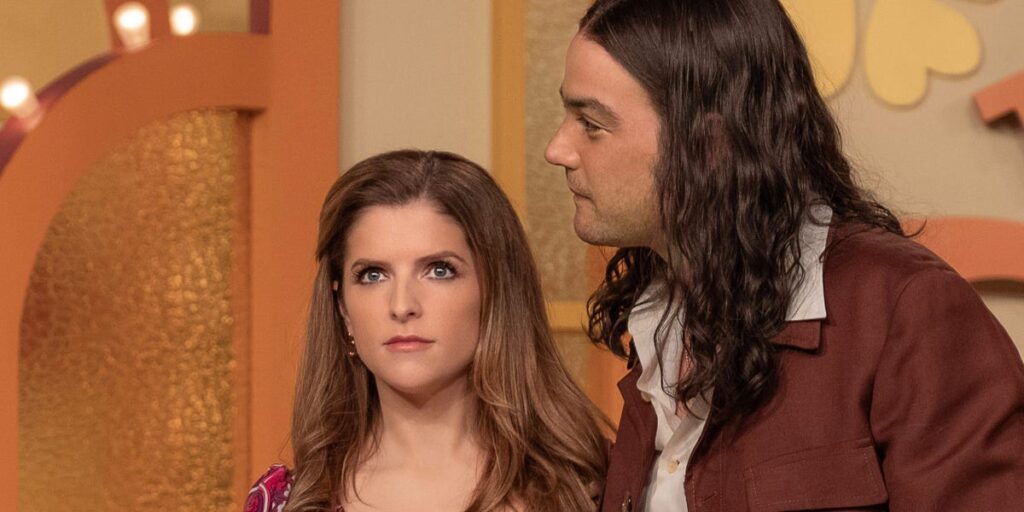- “Woman of the Hour” is based on the true story of serial killer Rodney Alcala appearing on a dating show.
- Amy, the film’s young runaway, is inspired by Monique Hoyt, one of Alcala’s targets who escaped.
- The character Laura represents the people who voiced concerns about Alcala but were ignored.
Netflix’s new movie “Woman of the Hour” takes inspiration from the wild story of serial killer Rodney Alcala competing on a dating show, but recenters the narrative on a woman who narrowly evaded becoming one of his victims.
“Woman of the Hour,” starring Anna Kendrick as Sheryl and Daniel Zovatto as Rodney, is a dramatized spin on Cheryl Bradshaw’s brush with Alcala on an episode of the ABC show “The Dating Game” in 1978.
The film is Netflix’s latest to feed into its audience’s obsession with true crime. Since releasing on Friday, “Woman of the Hour” has peaked at No. 2 on Netflix’s weekly Top 10 list of the most-watched films, with 9.9 million views during its first week of availability.
“Woman of the Hour” primarily focuses on Sheryl and Rodney’s encounter on the dating show. But the film also details several of Alcala’s murders that took place before and after his primetime appearance, showing how he preyed on unsuspecting women and gained their trust before killing them.
In real life, Alcala was convicted of the murders of seven women and girls, though the true number is believed to be over 100. Few people, mostly notably Tali Shapiro and Morgan Rowan, survived their interactions with Alcala.
Here’s how two key secondary characters in “Woman of the Hour,” Amy and Laura, are inspired by real-life people.
In ‘Woman of the Hour,’ teen runaway Amy outsmarts Rodney and is instrumental in him getting arrested
Amy (Autumn Best) meets Rodney in San Gabriel, California, on Valentine’s Day 1979. Rodney charms her by calling her beautiful and asks her to be his model for a photo contest he wants to enter.
While taking photos of her in the desert, secluded from any possible witnesses, Rodney tackles her. She wakes up with her hands and ankles tied, jeans pulled down, and blood on her face and clothing.
Amy asks Rodney not to tell anyone about what happened because she’d be embarrassed. She then fools Rodney by asking if they could go back to his place, which he agrees to. When Rodney stops at a gas station to use the bathroom and wash blood out of his fingernails, Amy takes the opportunity to flee before he returns to his car.
The movie ends with Amy standing at a nearby diner after calling the police and watching in satisfaction and relief as they arrest Rodney.
Amy is based on Monique Hoyt, a real person who survived her encounter with Alcala
“Woman of the Hour” includes a postscript that references the real-life inspiration for the character Amy.
Hoyt was a 15-year-old runaway when she met Alcala on February 14, 1979. After Alcala raped her, she escaped by asking him to keep their encounter a secret and convinced him that she wanted to continue seeing him.
The movie ends with him being captured by the police, but in real life, Alcala killed more people before finally being convicted of seven murders of women and children. During Alcala’s third trial in 2010, Hoyt, now an adult, testified against him.
“According to the prosecutor, ‘She showed up and put the nail in Rodney’s coffin,'” the “Woman of the Hour” postscript reads.
Alcala died of natural causes in July 2021 while incarcerated at Corcoran State Prison. Hoyt seemingly kept a low profile and little is known about what happened to her after testifying.
The character Laura represents the real-life people who tried to speak up about Alcala but were ignored
In “Woman of the Hour,” Laura is an audience member on “The Dating Game” who recognizes Rodney as the man who raped and murdered her friend Alison the previous year.
In one scene, Laura expresses regret over leaving Alison alone with Rodney at a bonfire despite sensing something was off about him. Throughout the movie, people doubt Laura and don’t take her seriously when she voices her suspicions about the “Dating Game” contestant. This includes her boyfriend Ken (Max Lloyd-Jones), a security guard on the show’s set, and an officer at a police station.
Laura’s experience reflects the way the real Alcala was reported to law enforcement multiple times but didn’t face consequences until much later in life.
“Laura really functions as kind of a representation of all the people that tried to raise the alarm and were ignored,” Kendrick told Tudum. “There are so many heroes in this story, but the heroes were outnumbered and outgunned by incompetence and negligence and a culture that did not prioritize victims.”
Read the full article here
















